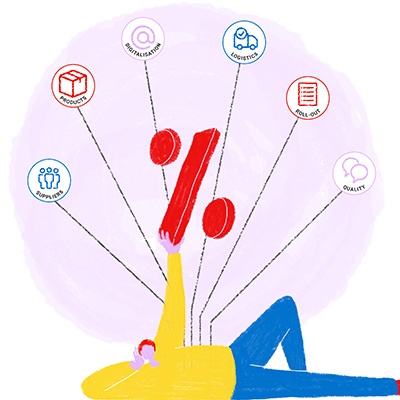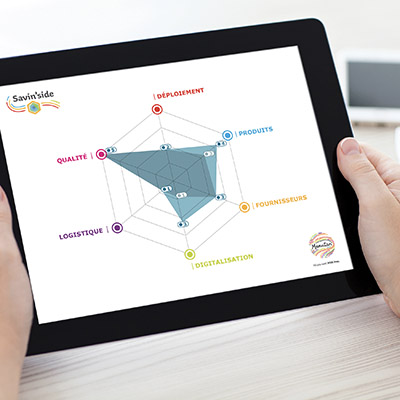We're living in a world driven by user experience, where technology is being used more than ever before to make our lives easier. In addition to being a means of standing out from the crowd and winning customer loyalty, user experience is also the key to companies driving a successful digital transformation. Unsurprisingly, this idea also applies to the world of procurement. For buyers, it's a known fact: A procurement solution must provide the best possible experience to end users. This is a prerequisite for winning loyalty to the platform and, more broadly, to the established procurement policy. There are four criteria that have become essential in today's world to guarantee a good user experience: ergonomics, performance, information and personalisation.
Criterion 1: Ergonomics
First and foremost, a procurement solution must be ergonomic: It must meet the user needs and offer optimal conditions to facilitate user behaviour. System navigation should be smooth, simple and intuitive. Internal customers want to be able to get to grips with the tool easily and find the products they need in just a few clicks, without the need for time-consuming training beforehand. The days when employees had to read long-winded user guides or attend training sessions for hours on end in order to learn how to use a digital platform are long gone! Even more so now that the "digital natives" are in the labour market.
Criterion 2: Performance
Whether a procurement solution is adopted or not will also depend on its ability to respond effectively to the needs of users. Its various capabilities must save them time in their day-to-day lives and help them to make decisions. This could be a powerful search engine; configuration software that enables product colour, material or even size to be customised; online support to answer any questions or deal with any problems; or automated complementary product suggestions.
Criterion 3: Information
Having a (very) good level of information detail is essential for making company purchases. This includes, above everything, high-quality product content, such as product descriptions, photos and videos, attributes, datasheets and warranty certificates. When internal customers know that their furniture meets fire safety standards or that their shelf can support a certain weight, they can then confidently choose the product that best meets their business needs. Internal customers also need access to practical information, such as stock levels, delivery times or additional costs (e.g. taxes and customs duties) to help guide their decision.
Criterion 4: Personalisation
In terms of customer experience, personalisation is becoming a growing trend. Users now expect that the procurement process can be adapted in its entirety (or close to it) to meet their expectations. Examples include the procurement solution being accessible on other devices (e.g. mobile phone), being able to personalise the interface, the ability to organise content in relation to order history or to customise each step of the purchase request (this could be the approval workflow or even packaging, delivery etc.). Some solutions that use the latest technology can even anticipate end-customer behaviour in order to deliver an even more personalised service.
By meeting these four criteria, a procurement solution can convince users of its merit and so contribute to procurement optimisation within the company. Until we have automated or voice-activated procurement solutions, let's focus our energy on these criteria!









